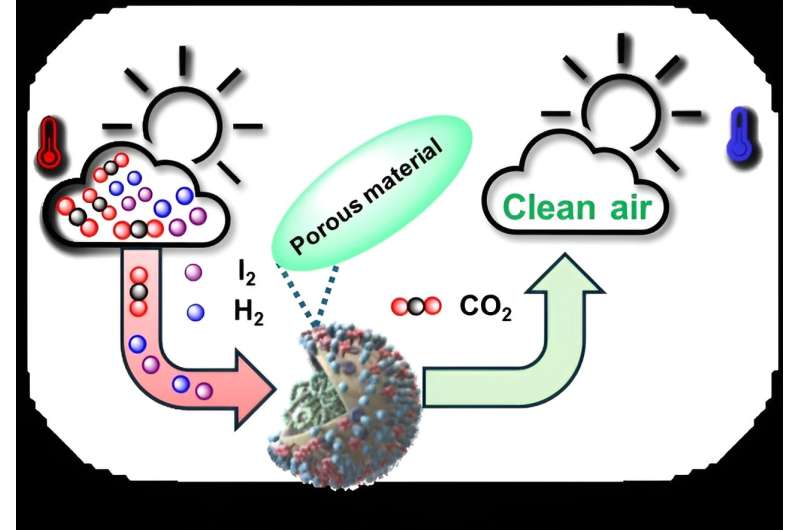This article has been reviewed according to Science X's editorial process and policies. Editors have highlighted the following attributes while ensuring the content's credibility:
fact-checked
peer-reviewed publication
proofread
Research team designs new porous materials to advance environmental remediation research

In a landmark achievement, the Functional Materials Group (FMG) led by Prof. Dr. Bassam Alameddine, has propelled porous materials research to new horizons. The latest endeavor was highlighted in a study published in ACS Applied Materials & Interfaces showcasing the FMG's pioneering work in designing new materials that uptake carbon dioxide, hydrogen, and iodine gases, thus, igniting interest across scientific communities worldwide.
FMG has engineered versatile and easy-to-make porous materials that boast unparalleled capabilities in gas adsorption. This discovery not only promises to revolutionize environmental sustainability efforts but also holds immense potential for advancing energy storage technologies.
With the world increasingly focused on combating climate change and fostering sustainable practices, the group's novel porous materials offer great potential. These materials exhibit remarkable efficacy in capturing carbon dioxide, a notorious greenhouse gas responsible for global warming.
The research team headed by Alameddine and comprising Dr. Noorullah Baig and Suchetha Shetty, in collaboration with Prof. Omar Farha and his postdoctoral researcher Dr. Debababrata from Northwestern University is paving the way for innovative solutions to mitigate the impacts of climate change and secure a cleaner, greener future for generations to come.
Furthermore, as the global demand for clean energy continues to soar, these porous materials demonstrate exceptional performance in hydrogen gas uptake, a key component in the quest for sustainable energy solutions. With hydrogen touted as the fuel of the future, the group's innovative work holds promise for its application in hydrogen storage technologies and driving the transition towards a carbon-neutral energy landscape.
Additionally, the study reveals the porous materials' proficiency in adsorbing iodine, a radioactive element that is released from nuclear power plants and which is known to be a harmful pollutant and carcinogenic. The development of materials capable of safely capturing and storing iodine holds significant importance towards safer practices in nuclear waste management and environmental protection.
More information: Suchetha Shetty et al, Tröger's Base-Enriched Conjugated Cyclopentannulated Copolymers: Prominent Adsorbents of CO2, H2, and Iodine, ACS Applied Materials & Interfaces (2024). DOI: 10.1021/acsami.3c18055
Journal information: ACS Applied Materials and Interfaces
Provided by Gulf University for Science and Technology





















